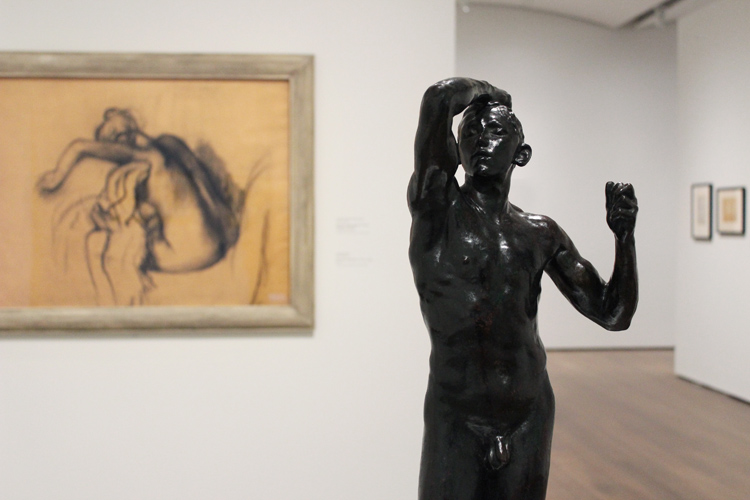
News
Summers Will Not Finish Semester of Teaching as Harvard Investigates Epstein Ties

News
Harvard College Students Report Favoring Divestment from Israel in HUA Survey

News
‘He Should Resign’: Harvard Undergrads Take Hard Line Against Summers Over Epstein Scandal

News
Harvard To Launch New Investigation Into Epstein’s Ties to Summers, Other University Affiliates

News
Harvard Students To Vote on Divestment From Israel in Inaugural HUA Election Survey
Arts Asks: Jessica L. Martinez

The Harvard Art Museums serve a unique purpose on campus: While they are an exhibition facility open to the public, they also contribute to education at Harvard. Jessica L. Martinez ’95, the Museums’ director of academic and public programs, works right at the intersection of these two tracks. Assisting professors in making use of the resources at the Art Museums to help teach their classes, she organizes special public exhibitions in collaboration with faculty members as well as class visits. This week, she talked to The Harvard Crimson about the details of her work.
The Harvard Crimson: What kind of courses typically collaborate with the Art Museums, and how do the collaborations work?
Jessica L. Martinez: We’ve been collaborating with faculty across the campus. We have a lot of classes that are in the General Education program, humanities colloquiums, freshman seminar programs, and an Expository Writing program. For departments, we have frequent visits from African and African American Studies, from Anthropology, Classics, Comparative Literature, Germanic Languages and Literatures, History. Of course History of Art and Architecture is our closest faculty partner, along with the Classics Department, and they make great use of the collection every week. But also [we have] History and Literature, History of Science, Human Evolutionary Biology [and Molecular and] Cellular Biology.
THC: Can you tell us how the biology departments get involved?
JM: There was a terrific Gen Ed course called [Trees, Forests and Global Change]. They would actually come to our conservation lab and look at the wood that made up the back of impressionist paintings to look at wood anatomy…. Sometimes faculty come to us with a syllabus and some learning objective and say: ‘What might we be able to experience within the space of the Harvard Art Museums?’ [We] work with faculty to say: ‘What is it that you want to do? Is it that you want a section conversation to happen in one of the collections galleries? Would you like to select works that actually exist in storage that we can bring out specifically for your class?’ We can bring out single works, make juxtapositions, or even develop an argument with and through original works of art. Some faculty want to think about the data that this museum holds, or show off their data in inventive ways, so they spend a lot of time in our Lightbox Gallery, a place for innovative teaching with data. Or they might want to think about problem solving in the space of the museum. How did artists create their work? What were the techniques, processes, materials they used? Some want their students to have a hands-on experience, and we typically do that in our Materials Lab.
THC: Some faculty members set up exhibitions in the galleries as part of courses. Have any of them been particularly successful?
JM: We have four University galleries... One of them is the University Teaching Gallery, and this is the space for History of Art and Architecture classes... Every semester so far we’ve had two HAA classes where the students get to dive into the materials and see the works they are studying in this gallery space. The public is invited to as well, to have new kinds of conversation. And the faculty, of course, pull up works that perhaps our curators haven’t... and bring their new perspectives. It’s of course a gain for everybody who visits the museum, but for the museum it’s another way that we get to learn more about works in our care, through the faculty research and the student work on them.
THC: The Art Museums are going to have a new Bauhaus [an art school in Germany famous for architecture] exhibition, and part of the focus will be the Bauhaus founders’ involvement at Harvard. Will there be any collaboration between the Art Museum and the Faculty of Arts and Sciences on this exhibition?
JM: We are hoping this will be a campus-wide initiative. We are already speaking with faculty members across campus to think about ways in which they might teach at this exhibition or if we can collaborate on programs and other research initiatives. We are already starting, even though the exhibition isn’t until 2019. What is terrific about a museum is that we have some time to plan, so we can have deep conversations with partners both on campus—so faculty, for their teaching and research, also student groups, and our neighbors and friends in Cambridge and Greater Boston as well. We can also convene people in different disciplines... all together around original works of art, and we can work together to see what can happen uniquely on Harvard’s campus.
—Staff writer Tianxing V. Lan can be reached at tianxing.lan@thecrimson.com.
Want to keep up with breaking news? Subscribe to our email newsletter.
